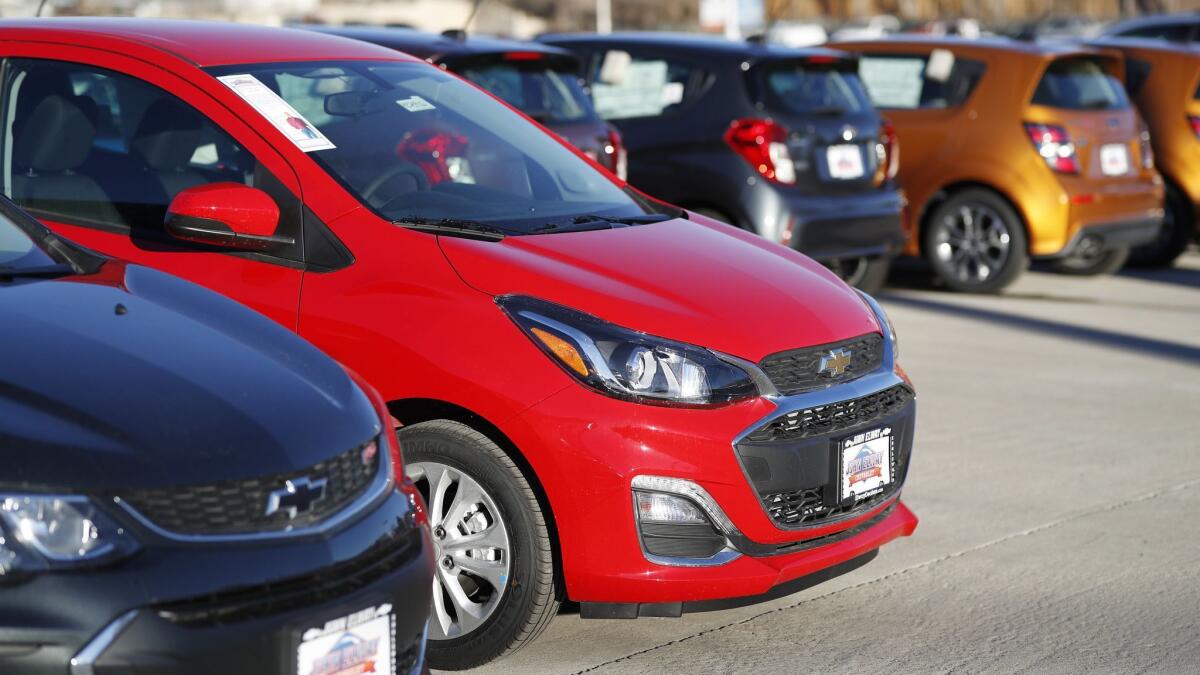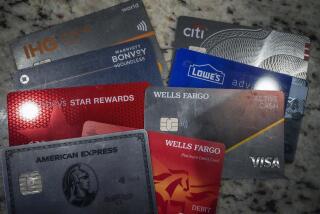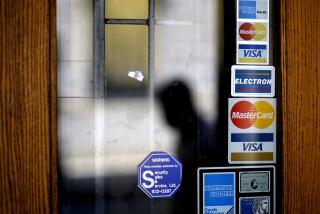Record 7 million Americans are 3 months behind on car payments, a red flag for the economy

A record 7 million Americans are 90 days or more behind on their auto loan payments, the Federal Reserve Bank of New York reported Tuesday, even more than in the wake of the financial crisis era.
This is a red flag, economists warn. Despite the strong economy and low unemployment rate, many Americans are struggling to pay their bills.
“The substantial and growing number of distressed borrowers suggests that not all Americans have benefited from the strong labor market,” economists at the New York Fed wrote in a blog post.
A car loan is typically the first payment people make because a vehicle is crucial to getting to work, and if all else fails, a person can live in a car. When car loan delinquencies rise, it is a sign of significant duress among low-income and working-class Americans.
“Your car loan is your No. 1 priority in terms of payment,” said Michael Taiano, a senior director at Fitch Ratings. “If you don’t have a car, you can’t get back and forth to work in a lot of areas of the country. A car is usually a higher-priority payment than a home mortgage or rent.”
People who are three months or more behind on their car payments often lose their vehicle, making it even more difficult to get to work, the doctor’s office or other important places.
The New York Fed said there were more than a million more “troubled borrowers” at the end of 2018 than there were in 2010, when unemployment hit 10% and the auto loan delinquency rate peaked. Today, unemployment is 4% and many more Americans have jobs, yet a significant number of people cannot pay their car loan.
Most of the people behind on their bills have low credit scores and are under age 30, suggesting young people are struggling to simultaneously pay their car loans and their student loans.
Auto loans surged in the last several years as car sales kept growing year after year, hitting a record high in 2016 of 17.5 million vehicles sold in the United States. Overall, many borrowers have strong credit scores and repay their loans, but the auto industry has suffered from high defaults among “subprime” borrowers, who have credit scores under 620 on an 800-point scale.
The share of auto-loan borrowers who were three months behind on their payments peaked at 5.3% in late 2010. The share is slightly lower now — 4.5% — because the total number of borrowers has risen so much in the past several years. Still, economists are concerned that the rate has been climbing steadily since 2016, even though unemployment fell to its lowest level in almost half a century, and the number of people affected is far greater now.
Experts warn Americans to be careful where they get an auto loan. Traditional banks and credit unions have much smaller default rates than “auto finance” companies such as the “buy here, pay here” places on some car lots.
Less than 1% of auto loans issued by credit unions are 90 days or more late, compared with 6.5% of loans issued by auto finance companies.
“The No. 1 piece of advice I have is to not get your financing from a car dealership,” said Christopher Peterson, law professor at the University of Utah and former special advisor to the Consumer Financial Protection Bureau. “Shop separately for the vehicle and the financing. Go to a credit union or community bank to get a low-cost loan.”
Rates can vary substantially depending on a borrower’s credit score and where they obtain a loan. A “prime” borrower, with a credit score in the range of 661 to 780, can get an auto loan rate of about 4.5% to 6%, according to NerdWallet. In contrast, a subprime borrower is typically looking at rates of about 14.5% to 20%.
After the 2008-09 financial crisis, there were a lot of restrictions placed on mortgages to make it harder to take out a home loan unless the borrower could clearly afford to make the monthly payments. But experts warn there are far fewer restrictions on auto loans, meaning consumers have to be more savvy.
“Predatory lending practices and a lack of real transportation options leave many households trapped in debt with few ways out,” said Faye Park, president of the liberal U.S. Public Interest Research Group.
Repossessing a car is also a quicker process than foreclosing on a home, thanks to technology and the laws in many states. There are devices installed in some cars that prevent the vehicle from turning on if a payment is missed. It has also become easier to track license plates and geolocate a car to repossess it.
While defaults on auto loans are a red flag, they are unlikely to take down the entire financial system the way mortgages did in the lead-up to the recent financial crisis. The total auto loan market is just over $1 trillion, far smaller than the $9-trillion home mortgage market.
The amount of money people borrow to buy a car is also much smaller — typically less than $35,000. People taking out a home loan often borrow several hundred thousand dollars.
More to Read
Inside the business of entertainment
The Wide Shot brings you news, analysis and insights on everything from streaming wars to production — and what it all means for the future.
You may occasionally receive promotional content from the Los Angeles Times.










